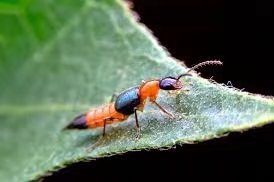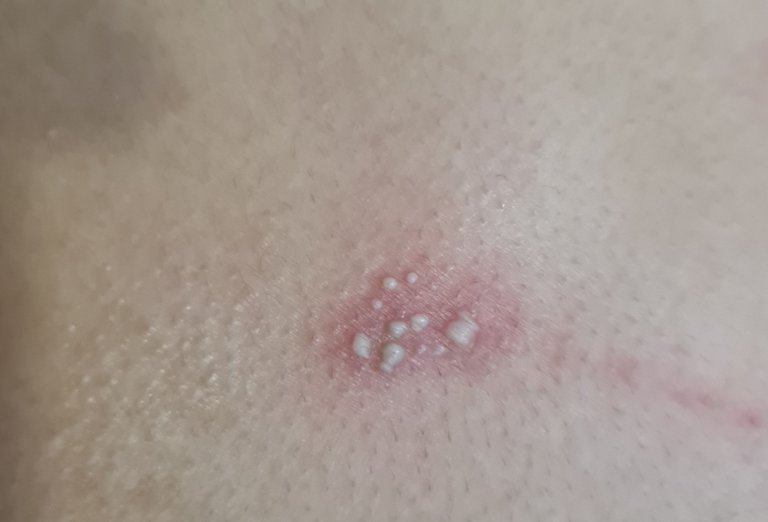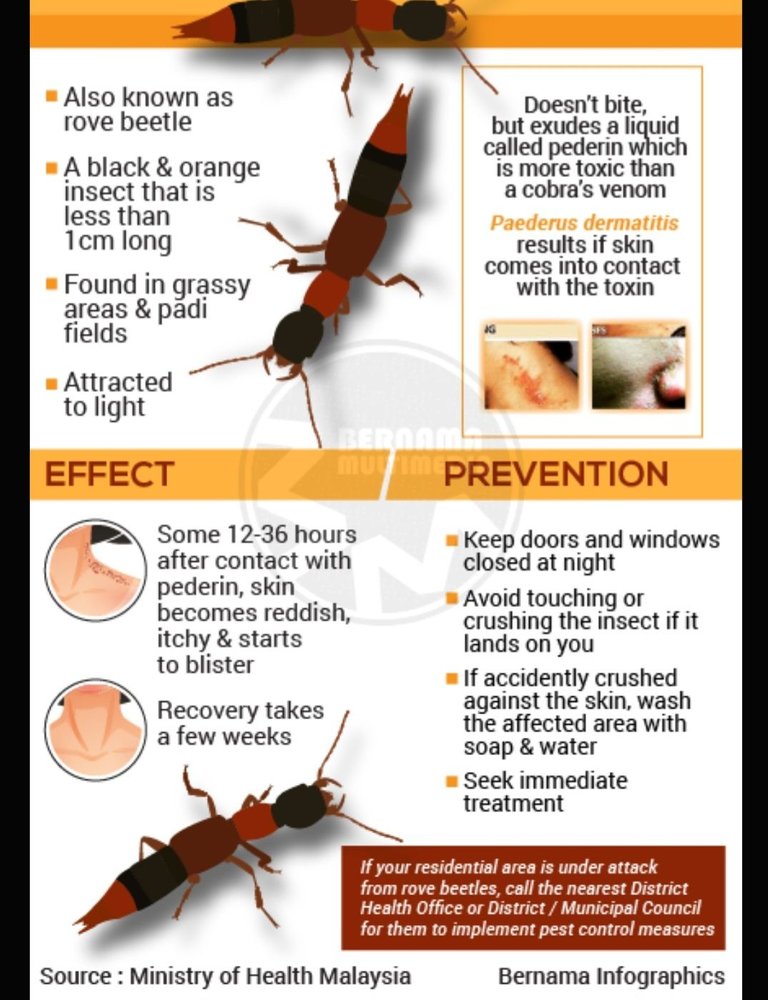Have you seen this insect? If you have, you need to read this article till the end to be aware of its dangers.

Paederus fuscipes Curtis - The Dangerous Rove Beetle
Paederus fuscipes Curtis is a species of rove beetle that belongs to the Staphylinidae family. Despite their small size, they can be dangerous to humans. Their common length is 7mm but can range from 3mm to 2.5mm. They have a black coloured head and tip with alternate orange and black colours in between. Their Malay names are Semut Semai, Semut Kayap and Charlie Ants, and they are often mistaken for ants due to their similar appearance.
Dangers: Skin Irritation and Blistering
This beetle resembles ants as it can be seen crawling around on the ground hiding its wings and raising its tail just like a scorpion when it feels threatened, but they have no sting. Instead, they release a foul-smelling fluid also known as paederin produced by the endosymbiont bacteria which contains a strong blistering chemical. This chemical causes skin irritations, blisters, swelling, a feeling of tingling, itching and conjunctivitis. It is 15 times more poisonous than cobra's venom. The scars are characterised by elongated lesions like a whiplash marking or a kissing lesion.

Habitat and Behavior
Rove beetles are an interesting species because of their omnivorous nature and nesting habits. They typically nest under leaf litter, debris, rocks, and plants. However, adult rove beetles have a tendency to be cannibalistic, eating their eggs and attacking other adults when the food supply is low. They primarily feed on small insects and their larvae.
It is worth noting that rove beetles are attracted to light and are often found in home gardens, paddy fields, or agricultural soils. Therefore, it is important to exercise caution when encountering these beetles, especially if you live in a high-rise condominium where they can still reach you even when you're reading in the dark.
Prevention and Treatment
Their lifespan is 40 to 72 days, and encountering one should be avoided. If you do come into contact with a rove beetle, the best thing to do is to blow it away. Do not try to crush it, as this can release the blistering chemical. If you accidentally crush a beetle, immediately wash the affected area with water and soap to prevent the chemical from dispersing. Seek medical help if the dermatitis linearis gets out of control, and contact the public health and municipal authority to control the swarming of the rove beetles by thermal fogging or targeted spraying.

Thanks for that information. It might prevent a terrible experience. !PIZZA !ALIVE
@ygin2! You Are Alive so I just staked 0.1 $ALIVE to your account on behalf of @cryptopsycho21. (2/10)
The tip has been paid for by the We Are Alive Tribe through the earnings on @alive.chat, feel free to swing by our daily chat any time you want.

PIZZA Holders sent $PIZZA tips in this post's comments:
@cryptopsycho21(4/15) tipped @ygin2 (x1)
You can now send $PIZZA tips in Discord via tip.cc!